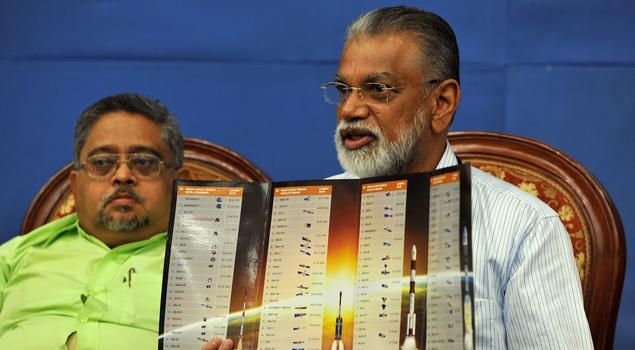September 17, 2012
The Indian Space Research Organization has announced they will launch a space probe to orbit Mars in November 2013. The country hopes to launch its first manned mission to Mars by 2016.

September 17, 2012
The Indian Space Research Organization has announced they will launch a space probe to orbit Mars in November 2013. The country hopes to launch its first manned mission to Mars by 2016.

India plans to launch a space probe that will orbit Mars in November 2013, a senior official from the country's space research establishment said on Monday.
"We are scheduling to launch the Mars mission November 27, 2013 when the red planet will be closer to the earth," K. Radhakrishnan, chairman of Indian Space Research Organization (ISRO) told reporters in Bangalore.
"We plan to put a spacecraft in an elliptical orbit for studying its atmosphere and detect presence of life on its surface," he said in the southern Indian city, where ISRO is headquartered.
The project would mark another step in India's ambitious space program, which placed a probe on the moon three years ago and envisages its first manned mission in 2016.
According to Radhakrishnan, the unmanned mission could cost nearly five billion rupees ($90 million).
India has a well-established space program, which is a source of strong national pride, but it has also attracted criticism as the government struggles to tackle dire poverty and child malnutrition.
In September 2009, India's Chandrayaan-1 lunar probe discovered water on the moon, boosting the country's credibility among more experienced space-faring nations.
But the space program suffered a setback in December 2010 when a satellite launch vehicle blew up and fell into the Bay of Bengal after veering from its intended flight path.
The United States, Russia, Europe, Japan and China have all sent missions to Mars.
The US robot Curiosity is currently on the surface of the "Red Planet" after landing on Mars more than a month ago.
It is a nuclear-powered vehicle that is designed for a two-year mission, though scientists hope it will last at least twice that long.
Courtesy: Space.com
















































































































